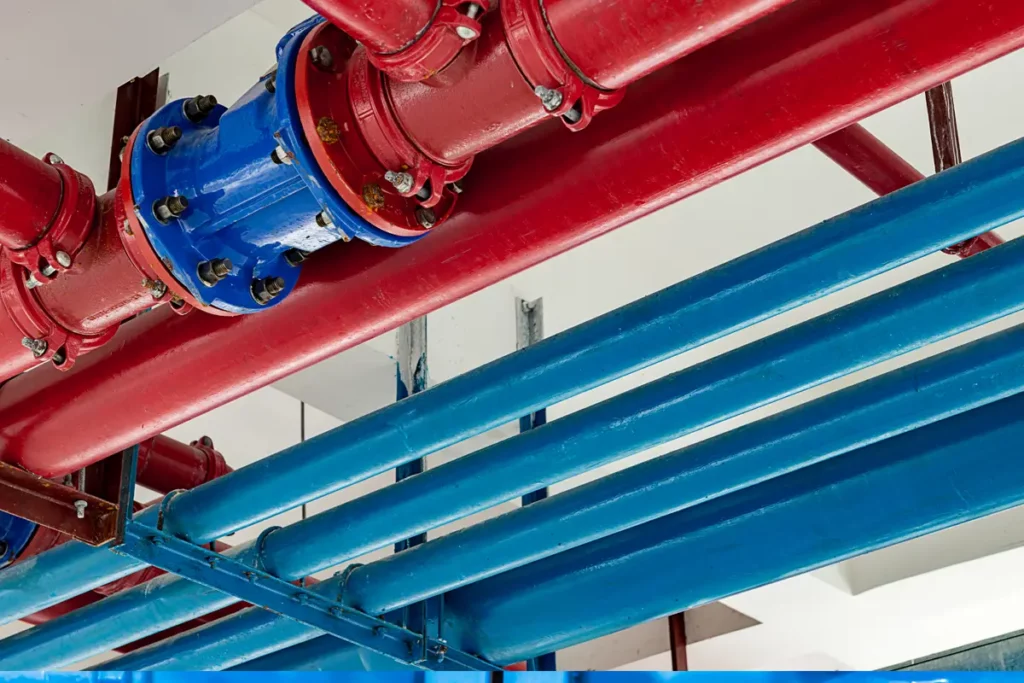Air release valves for water systems help maintain system integrity and pressure by allowing the quick release of built-up air or gas in the system. Naturally occurring air makes up approximately two per cent of the flow volume passing through pipes in water and wastewater systems, but that only applies in ideal conditions. Temperatures that exceed minus eight degrees Celcius can speed up gas development, particularly in wastewater applications, which is why air release valves are a necessary component for many water systems.
As gas builds up, it tends to bunch together, creating gas pockets near pipe joints and other areas. This can cause a wide variety of issues. Hydraulic jumps and other regions with pressure changes allow the air and gas to separate from the liquid flowing through your pipes. The result is changed liquid flow through those areas, reducing or increasing pressure and, in some cases, completely blocking the flow of liquid and rendering the entire system inert. Solutions for air and gas buildup are affordable and reasonably simple.
Fixing the problem of gas buildup in a closed water system may be achieved through air release valves for water systems. These valves allow the pipes to bleed off the gas without losing water, returning the internal lines to optimal condition. A simple example of this application may be the valves located on traditional heating radiators in homes. Periodic air release allows water to flow through the radiators, activating heating systems.
Continual Removal of Air and Wastewater Gases
Installing air release valves for water systems can also allow continual gas removal during normal operations. When water moves through pipes rapidly, these valves serve two distinct purposes, improving efficiency and safety. Air or gases that accumulate in a pressurised piping system can disrupt water flow and damage the system. Some examples of the problems associated with failure to remove gases include:
- Water surges.
- Water hammer.
- High pressure at joints.
- Equipment damage.
- Loosen fittings.
- Leaks.
When gas dislodges from the liquid without external control, it can suddenly allow much higher pressure within the pipes, causing a surge. Water hammer is a situation where the built-up pressure results in the contents of the line acting as a virtual ‘hammer’ on the fittings and attached equipment. Another common problem with exposure to the air inside the pipes is corrosion. When pipes have air exposure internally, the metal can rust, accelerating the replacement timeline and leading to higher costs.
Learn more about where to install air release valves for water systems.
Transients and Surge
Depending on the location of the air and wastewater gas pockets, significant damage can occur due to transients and surges, mainly down surges. Transients are short-term changes to the internal pressure of the pipes. Pipes become conditioned to standard use conditions. Sudden changes to the internal pressure can cause pipes to dislodge, leading to leaks. Even small pockets of air or gas can intensify transients and surges, which is why air release valves are a critical component when designing a safe and effective water system.
Other impacts from air and gas include efficiency loss. When air and wastewater gas take up the headroom in a pipe, it slows the water flow through the system. Decreased capacity often ties directly to increased energy consumption as external energy is needed to bridge the gap. If water flows slowly, you might respond by opening the water valves to the maximum or introducing pumps to speed water flow.
Fixing Air and Wastewater Gas Pockets
Simply bleeding off that excess air or gas through air release valves is a solid solution for improving flow through your pipes, without the need for any other intervention. Air release valves reduce the size and frequency of air pockets by allowing the gas to flow out while trapping the water inside. These valves also have floats that engage to control the pressure of water flow through your pipes, keeping everything moving at optimal pressure.
If water pressure increases suddenly, air release valves operate to reduce the pressure until everything equalises. By combining a way to control the water pressure and reduce air and gas pockets, these additions to closed water or wastewater piping systems are an affordable and efficient way to solve the problem of gas build-up. Need help with inefficient plumbing? Contact John Valves today to install air release valves on your system.
Read More

